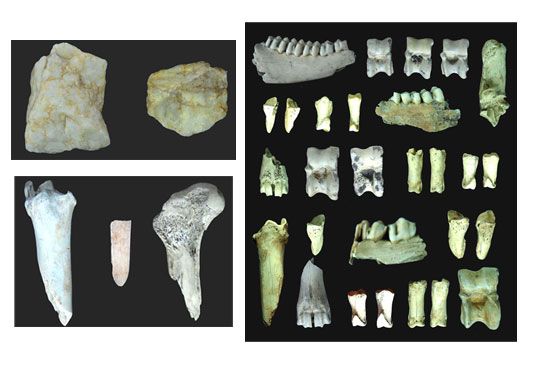Newly excavated natural cave site of Paleolithic era
Recently research group of History Faculty in
With certain desire that they could find relics of the Paleolithic era not only in the basin of the Taedong River but also in other areas, research group investigated 34 natural caves in Singye County and founded natural cave in Sajong-ri that seemed to be of the Late Paleolithic era.
While professors and researchers were making treatment on sediments which became solid and prospecting natural cave, they found out some of stone implement and mammal fossils regarded as relics of the Paleolithic era. They had several scientific conferences with these results and came to conclusion that this cave could be a valuable site of the Paleolithic era and made an overall excavation.
Stone implement used in hunting animals as pushers, scrapers, cutters and bone implement used in collecting plants were founded during the excavation. Pusher is well known as a stone implement that was first appeared in the Late Paleolithic era and widely used.
Besides 17 mammal fossils as field mouse (lower jaw bone), weasel (lower jaw bone), water deer (lower jaw bone), bear (femoral bone), lynx (ulna) and the like were founded and 2 of them became extinct.
It has an important significance that natural cave site of the Late Paleolithic era was newly excavated.
Until now, remains of the Paleolithic era in our country were mostly founded in the basin of the Taedong River.
The basin of the Ryesong River is situated between Ahobiryong range and Myolak range in the middle area of our country and it is the first time to find out the remains of the Paleolithic era in this area.
This clearly shows that our ancestors had lived not only in the basin of the Taedong River but also in wide area including the basin of the Ryesong River.
This is an important scientific data which ascertains historical evidence that Korean nation has established independent life and culture with creative labour in wide areas of this country.
